The Best Solid State Amp in 2023
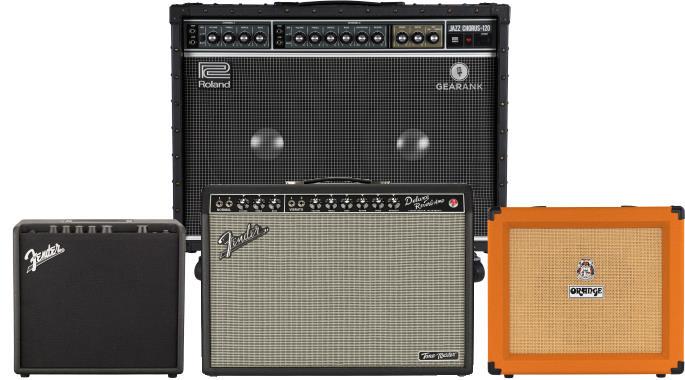
Under $500 - Regular Solid State
Orange Crush 20RT
Cons
- Clean tone is unimpressive
- Limited volume and bass response
Pros
- Great sounding Orange brand overdrive
- 4-stage preamp design that makes the amp sound "alive"
- Distinct aesthetics and portable form factor
- Practice-friendly features include built-in tuner, aux input, and headphones out
- Good sounding reverb
There's just no mistaking an Orange amp, especially those that follow their signature picture frame design and grille cloth. The Crush 20RT comes in this familiar form factor with built-in solid state Reverb tank, and Tuner - hence the label "RT".
This amp also features line-out emulation which replicates the response of a miked 4x12 cabinet. This makes it sound good when used with either headphones or a P.A. It retains a lot of the character that other amps lose when you plug headphones into them. This makes it worth serious consideration if you’re looking for a silent practicing amp.
Cheap amps aren't really known for killer looks and overdriven tone. But this wallet-friendly amp is definitely special in its price range.
Specs
- Power Rating: 20-Watts
- Speaker Size: 8”
- Channels: 2
- Controls: Clean/Dirty Switch, Dirty, Treble, Middle, Bass, Gain, Clean, Reverb, Tuner
- Amp Models: None
- Effects: Reverb
- Inputs/Outputs: 1 x 1/4", 1 x 1/8" (Aux), 1 x 1/4" (Headphones)
- Dimensions: 12.8" x 14.67" x 7.75"
- Weight: 15.9 lbs
| Website | Source | *Rating Value |
| Guitarist Next Door | Teemu Suomala | 90/100 |
| PRS for Music | Dan Whaley | 95/100 |
Orange Crush 35RT
Cons
- Clean tone is not as good as its Dirty Channel
- Needs to be driven hard to get good overdrive tone (you can tweak the EQ to improve the sound at lower volumes)
- 10" speaker means limited bass response
Pros
- Great sounding Overdrive for rock, blues, and similar styles
- 4-stage preamp design that results in better OD saturation and response
- Distinct aesthetics and portable form factor
- Practice-friendly features include built-in tuner, aux input, and headphones out
- Good sounding reverb
The no-frills Orange Crush 35RT is a 35W combo amp that continues to attract high ratings from guitarists. It does away with the bells and whistles that other amps offer but makes up for its lack of features with its 4-stage preamp. This results in tones that many people appreciate, especially when driven hard.
The preamp section has two channels, clean and dirty, with the dirty section being its strong suit. Tone shaping controls include basic EQ along with volume and gain knobs. As the "RT" label implies, this one comes with a solid state Reverb pan and Tuner built-in.
Finally, this electric guitar amplifier is housed in the familiar picture frame style cabinet that's unmistakably Orange, along with its 10" speaker. It also comes in a black cabinet if orange is too bright colored for you. Note that it doesn't have an output for connecting with a speaker cab.
If you're looking for the best cheap guitar amp with rock friendly tone, then The Orange Crush 35RT is for you.
Specs
- Power Rating: 35-Watts
- Speaker Size: 10”
- Channels: 2
- Controls: Clean/Dirty Switch, Dirty, Treble, Middle, Bass, Gain, Clean, Reverb, Tuner
- Amp Models: None
- Effects: Reverb
- Inputs/Outputs: 1 x 1/4", 1 x 1/8" (Aux), 1 x 1/4" (Headphones)
- Dimensions: 12.8" x 14.67" x 7.75"
- Weight: 15.9 lbs
| Website | Source | *Rating Value |
| Music Radar | Nick Guppy | 100/100 |
| Guitar World | Chris Gill | 92/100 |
Under $500 - Solid State With Amp Modeling
Fender Mustang LT25
Cons
- Some of the amp models are not as good as others, particularly the high-gain ones
- 8" Small speaker means low projection and bass
- Will not be your cup of tea if you prefer classic Fender amp aesthetics (see the Deluxe Reverb below for an example)
Pros
- Great sounding Fender style cleans
- More than enough amp models and effects to cover a wide variety of musical styles
- Good balance of features, intuitive controls, and portability
- Often commended for its high build and modern aesthetics
The LT25 takes Fender's Mustang amp modeling technology and packs it in an affordable and compact 1 x 8" combo amp configuration, rated at 25 Watts. This is a digital amplifier that lets you choose from 20 amp models and 25 effects. And you can blend them to taste and save them in the amp's 50 presets.
The sound of the amp covers everything from Fender's trademark clean tones to mid crunch and even high gain, and it does all this while retaining a control interface that even beginners can manage. Other features include USB recording and software control, built-in tuner, and headphones output.
When it comes to quality and value for money the Fender Mustang LT25 is quite a force to reckon with. It is the best budget guitar amp for those who want modern features in a compact amp.
Specs
- Power Rating: 25-Watts
- Speaker Size: 8”
- Channels: 1
- Controls: Gain, Volume, Treble, Bass, Master, Preset, Back, Save, Menu, Tap
- Amp Models: 20
- Effects: 25 (Modulation, Reverb, Delay)
- Inputs/Outputs: 1 x 1/4", 1 x 1/8" (Aux), 1 x 1/8" (Headphones)
- Dimensions: 14.5" x 16.8" x 11.9"
- Weight: 14.9 lbs
| Website | Source | *Rating Value |
| Guitar World | Stuart Williams | 90/100 |
| Music Radar | Music Radar | 90/100 |
| Expert Reviews | Darien Graham-Smith | 60/100 |
Line 6 Spider V 60 Mk II
Cons
- Can be overwhelming for those who just want a few essential tones.
- Steeper learning curve because of its myriad features
- Those with sensitive ears might find its high-gain settings to be too thin sounding.
Pros
- Superb tone flexibility care of its many amp models, cabs, mics, and effects
- Can conjure plenty of good tones, including realistic Plexi style ones
- Great starter platform to learn about guitar amps and effects
- Beginner-friendly features that include multiple presets, drum loops, metronome, demo riffs, and more
- Practice-friendly features include a built-in tuner, aux input, and headphones out
- Full Range and Classic Speaker Mode flexibility
Love them or hate them, the Spider series digital sound processing amps have permanently altered the landscape of amplifiers, making amp modeling a standard feature among many guitar amps.
The Line 6 Spider V 60 Mk II is part of their current lineup, packed with 78 amp models, including acoustic amps, 24 cab sims, and 10 mic models. There are 200 presets that cover a wild range of tones and styles, which you can personalize to taste.
The effects side lets you use up to 8 at once, with a wide selection that includes various distortion, dynamics, modulation, delay, reverb, EQ, and more, 101 in total. It also comes with a 60-second looper, which essentially makes this amp an all-in-one compact guitar rig.
To better handle the wider frequency needs of amp modeling, Line 6 equipped this 60-Watt amp with a 2-way full range speaker set that includes a 10" woofer and a tweeter. And since this is part of the Mk II line, it has a "Classic Speaker Mode" which disables the tweeter and the cab simulation, for a more traditional amp sound.
Other nifty features include having a built-in Line 6 Relay Wireless receiver, tuner, metronome, and drum loops.
Note: Spider V Mk1 amps can be updated to Mk2 via firmware update - this means that owners of Mk1 amps can benefit from the updated presets and Classic Speaker Mode feature without being forced to buy new hardware.
While there are valid criticisms towards this amp, it's hard to argue with its continued success, this is definitely well worth checking out if you're looking for a feature-packed amp.
Specs
- Power Rating: 60 Watts
- Speaker: 1 x 10" Woofer, 1 x Tweeter
- Channels: 1
- Controls: Drive, 3-Band EQ, Volume, Comp, Fx1, Fx2, Fx3, Reverb, Master, Preset
- Amp Models: 78 x Amps, 24 x Cabs, 4 x Mics
- Effects: 101 Digital Effects (Up to 8 Simultaneous)
- Input: 1 x 1/4", 1 x 1/8" (Aux in)
- Output: 1 x 1/8"
- Extras: Classic Speaker Mode (Turns off Cab modeling and Tweeter), Built-in Tuner, Metronome, Looper, and Drum Loops
- Dimensions: 17.4" x 16.9" x 9.1"
- Weight: 20.5 lbs.
| Website | Source | *Rating Value |
| Music Radar | Nick Guppy | 100/100 |
| Guitarist Next Door | Teemu Suomala | 86/100 |
Boss Katana-50 MkII
Cons
- Software editor takes a bit of getting used to
- There are reports of driver error and connectivity issues when using Boss' software editor
- Not ideal for those who want to tweak and play with more amp models and effects
Pros
- Fewer but great sounding models of different Types of Amps, especially the clean, brown, and lead
- Versatile power control, making it useful for both performance and practice
- Good quality effects, derived from Boss/Roland's guitar processors
- Intuitive control setup
The Boss Katana series takes the amp modeling concept and strips it of unwanted fluff, resulting in just 5 main amp types - Brown, Lead, Crunch, Clean, and Acoustic.
This streamlined design makes the Katana an appealing electric guitar amplifier to those who only care for a few core tones. It also reduces the learning curve, which results in more playing time over tweaking. Note that the current iteration, MkII, expands the amp selection to 10 by introducing a "variation" button that changes the voicing of the original five amp types.
The Boss Katana-50 MkII carries this stripped-down amp modeling, and packs it inside a 50-Watt combo amp with a single 12" speaker. But it is in no way limited to operating at 50 Watts because it comes with a power control knob that lets you attenuate the power to half (25 Watts), and you can go even lower to 0.5 Watts.
This power rating flexibility means that you can crank the amp to get good tones at lower volumes. This is a feature that many appreciate, especially those who want good tone without disturbing family and neighbors.
In addition to amp types, the Katana-50 MkII lets you use up to 5 different effects simultaneously, from a selection of over 60 digital Boss effects that you can get from Boss' software editor. Speaking of software editor, the USB port can also be used as direct recording output. Another useful feature of the amp is its 1/4" Headphones/Recording out.
With its versatile power attenuation and digital sound processing, the Boss Katana-50 MkII is a good amp to recommend to guitarists regardless of musical style or experience level.
Specs
- Power Rating: 50 Watts (25W / 0.5W Attenuation)
- Speaker: 1 x 12"
- Channels: 4 Preset Banks, 10 Amp Types
- Controls: Amp Type, Variation, Gain, Volume, Bass, Middle, Treble, Booster/Mod, FX/Delay, Reverb, Master, Power Control, Tone Setting
- Amp Models: 10 - 2 Variations of Brown, Lead, Crunch, Clean, Acoustic
- Effects: 30 (Up to 5 Simultaneous), 60 total effects via Boss Tone Studio Software
- Input: 1 x 1/4", 1 x 1/8" (Aux in), 1 x 1/4" (Power Amp)
- Output: 1 x 1/4" (Rec/Headphones), USB Type B
- Extra: Switchable Power Attenuation, Power Amp Input (Uncolored Amplification)
- Dimensions: 15.6" x 18.5" x 9.3"
- Weight: 25.6 lbs.
| Website | Source | *Rating Value |
| Guitar World | Richard Blenkinsop | 100/100 |
| Guitar | Richard Purvis | 80/100 |
Yamaha THR10II
Cons
- Given its small speakers, it's not loud enough for band practice
- Not ideal for those who want traditional combo amps
Pros
- Great all-around amp for home use
- Can be a good portable amplifier solution
- Intuitive enough for novices while having deep enough features for advanced musicians
- Surprisingly good quality amp voicings that take advantage of its stereo speaker setup
- Good sounding reverb and delay
The Yamaha THR series has changed the shape of guitar amps to better-fit home studio setups. The THR10II is part of this line, sporting a desktop-friendly rectangular profile that is similar to old radios and amp heads.
Instead of having to reach down for amp controls, the THR10II can be conveniently accessed because it sits on your desk. It also places the speakers in a more direct position relative to the musician, and since it can be connected to your computer, it can turn your home office, or gaming setup, into a convenient practice and recording studio.
Because of its compact profile, this amp can only house small speakers, two 3" speakers to be exact. But thanks to amp modeling, it does get the guitar tone to output nicely through the speakers, albeit the sound is more like listening to a guitar part on a music track - than a traditional amp.
Given its purpose and size, Yamaha limited its power rating to 20 watts. Speaking of amp modeling, the THR10II gives you 15 electric guitar amp models, which cover much of the typical guitar tone. In addition, it has 3 bass amp models, 3 mic amp models, and a flat mode, making it an ideal amp for multi-instrument use. It also gives you access to essential effects that include different modulation effects, reverb, and delay. Other useful features include Bluetooth streaming and a tuner.
The Yamaha THR10II is the best solid state guitar amp for musicians with a computer-centric setup at home.
Specs
- Power Rating: 20 Watts
- Speaker: 2 x 3"
- Channels: 3 Preset Banks
- Controls: Amp, Gain, Master, Bass, Middle, Treble, Effect, Echo/Rev, Output (Guitar/Audio), User Preset Buttons, and Tap Tempo Button
- Amp Models: 15 Guitar Amps, 3 Bass Amps, 3 Mic Amps, Flat Mode
- Effects: Reverb(Spring/Hall), Chorus, Flanger, Phaser, Tremolo, Echo, Compressor, Noise Gate (2 Simultaneous, Up to 3 effects via App controller)
- Input: 1 x 1/4", 1 x 1/8" (Aux In)
- Extras: Bluetooth Connectivity, Built-in Tuner, and Tap Tempo
- Dimensions: 7.2" x 14.49" x 5.5"
- Weight: 6.61 lbs.
| Website | Source | *Rating Value |
| Sound on Sound | Paul White | 95/100 |
| Mixdown Mag | Editor | 95/100 |
| Performer Mag | Chris Devine | 96/100 |
$500 to $1500 - Regular Solid State
Fender Tone Master Deluxe Reverb
Cons
- Price is a bit steep, enough to buy a 2nd hand tube Deluxe reverb amps
- Not for purists who want nothing less than genuine tubes
- Not for those who want multiple amp models and effects
Pros
- Highly rated for its tube-like tone
- Pure solid state design means none of the bulk, fragility, and maintenance requirements of actual tubes
- Stage and studio-ready projection, but with a power attenuation option for recording and practice
- Great sounding reverb and tremolo effect
- Intuitive 2-channel interface
- 2-button footswitch included
The Fender Tone Master Deluxe Reverb is a modern solid state recreation of its all tube namesake. It is meant to replicate the sound, look, and overall vibe of the original Deluxe Reverb. But without a vacuum tube, and with modern enhancements that include power attenuation.
Its minimalist approach contrasts the usual multi-featured Fender Mustangs. It does away with multiple amp models and effects. Rather, it concentrates all its digital processing and gain stages into reproducing the voicing of Fender's classic tube amp. And it is doing it really well, based on the many extremely positive reviews that it's getting.
Rated at 100W with a 12" Jensen N12K neodymium speaker, this combo amp is designed to model the same SPL (sound pressure level) as a 22W Deluxe tube amp, but with its built-in power attenuator you can lower the output down to 0.2W. Finally, it does all this without the usual weight associated with tube amps.
This is a reliable workhorse amplifier with genuine Fender tube tone that even experienced guitarists appreciate. Highly recommended for those who want the simplicity and tone of a clean tube amp in a solid state amplifier.
Specs
- Power Rating: 100 Watts (22W, 12W, 5W, 1W, 0.5W, 0.2W Selectable)
- Speaker: 1 x 12" Jensen N12K
- Channels: 2 (Normal/Vibrato)
- Controls: Volume (Ch1), Treble (Ch1), Bass (Ch1), Volume (Ch2), Treble (Ch2), Bass (Ch2), Reverb, Speed, Intensity, Output Power, Cabinet Sim, Balanced Line Out, Ground/Lift
- Amp Models: 1 (Deluxe Reverb)
- Effects: Reverb, Tremolo
- Input: 2 x 1/4" Normal, 2 x 1/4" Vibrato
- Output: 1 x XLR (DI out)
- Extras: Power Attenuation, 2-Button Footswitch (Included), Solid Pinewood Cabinet
- Dimensions: 17" x 24.1" x 9.28"
- Weight: 23 lbs.
| Website | Source | *Rating Value |
| Premier Guitar | Charles Saufley | 90/100 |
| Guitar Mag | Ed Oleszko | 90/100 |
| Guitar World | Nick Guppy | 85/100 |
Fender Tone Master Twin Reverb
Cons
- You are paying a premium price for its close resemblance to the Blackface Twin in terms of looks and tone.
- Not for purists who want nothing less than genuine tubes
- Not for those who want multiple amp models and effects
Pros
- Impressive Blackface Twin tone emulation, causing some Blackface Twin tube amp owners to switch to this lighter solid-state version.
- Good tone with none of the bulk, fragility, and maintenance requirements of actual tubes.
- Loud enough for stage, but can be tamed for recording and practice via its built-in power attenuation
- Great sounding reverb and tremolo effect
- Classic 2-channel interface with Bright switch
- 2-button footswitch included
The Fender Tone Master series gets another spot in this guide with the Tone Master Twin Reverb, a modern solid state reproduction of the iconic Fender Twin Reverb tube amp with built-in power attenuator.
This one is rated at 200-Watts, with two 12" Jensen N-12K neodymium speakers, configured to reproduce the SPL of the original 85-Watt tube rating. Its seemingly simple design can make you forget that it is actually a powerful digital guitar amp that utilizes DSP modeling to emulate the tone and feel of its namesake. The downside to this is that it won't have as many tones and features as other Fender solid state amps.
It sports the same 2 channels (normal and vibrato), two inputs with bright switch and dedicated 3-band EQ per channel, and controls for reverb and tremolo speed and intensity. The power attenuator feature lets you bring down the output level to 1-Watt, for cranking up the amp at lower volumes. All these features are packed in a 33 lb. combo amp profile with tilt-back action that closely resembles the original.
There's a reason why the Twin Reverb is considered one of the best fender amps. If you are a fan of the original Twin Reverb, then this is one solid state amp that you don't want to miss. But you don't have to be a fan of the original to appreciate the overall top-notch performance of this amp.
Specs
- Power Rating: 200 Watts (85W, 40W, 22W, 12W, 5W, 1W selectable)
- Speaker: 2 x 12" Jensen N12K
- Channels: 2 (Normal/Vibrato)
- Controls: Normal Channel: Bright Switch, Volume, Treble, Middle, Bass
Vibrato Channel: Bright Switch, Volume, Treble, Middle, Bass, Reverb, Speed, Intensity, Output Power, Cabinet Sim, Balanced Line Out, Ground/Lift - Amp Models: 1 (Twin Reverb)
- Effects: Reverb, Tremolo
- Input: 2 x 1/4" Normal, 2 x 1/4" Vibrato
- Output: 1 x XLR (DI out)
- Extras: Power Attenuation, 2-Button Footswitch (Included), Solid Pinewood Cabinet
- Dimensions: 20.24" x 26.6" x 10.35"
- Weight: 33 lbs.
| Website | Source | *Rating Value |
| Guitar World | Nick Guppy | 85/100 |
| Guitar Mag | Ed Oleszko | 90/100 |
| Guitar Pedal Demos | intheblues | 90/100 |
Roland JC-120 Jazz Chorus
Cons
- Bulky and heavy, especially when compared to newer amps
- Not many extra features to play with
Pros
- Considered by many as the holy grail for clean tone
- Good clean platform for pedals
- Consistent, durable and gig worthy, with many testimonies of it working reliably for decades
- Easy to use, works well with other instruments like synths and keyboards
- Classic chorus effect sound
The Roland JC-120 is the flagship model of the Jazz Chorus amp line, and it continues to be in demand long after it was first released back in 1975. As such, this amp commands a premium price, but it is still something that many are happily and willingly paying for.
Rated at 120W, with a pair of 12" speakers in tow, this combo amp is loud enough to handle the volume requirements of most venues. And it does so while faithfully producing the amp's distinctly clear sounding clean tone.
Interestingly, this particular model comes with a dedicated channel with built-in distortion, although that's not what most users will buy or use this amp for. Wrapping up its features are stereo inputs and 3-band EQ for each channel, built-in reverb and chorus, and dedicated footswitch ports for the reverb, distortion and chorus effects.
If you want a tour-ready solid state amp with great sounding cleans, then this should be high on your list.
Specs
- Power Rating: 120 Watts (2 x 60W)
- Speaker: 2 x 12"
- Channels: 2
- Controls: Ch1: Bright Switch, Volume, Treble, Middle, Bass - Ch2: Bright Switch, Volume, Treble, Middle, Bass, Distortion, Reverb, Speed, Depth, Vib/Chorus, Effect Loop Level, Effect Loop Type
- Amp Models: None
- Effects: Stereo Chorus, Spring Reverb, Vibrato, Distortion
- Input: 1 x 1/4"
- Output: 2 x 1/4" (R/L Lineout)
- Extras: Effects Loop with level and series/parallel switches, Chorus and Vibrato effects, Casters included
- Dimensions: 24.49" x 29.92" x 11"
- Weight: 61.73 lbs.
| Website | Source | *Rating Value |
| Just Guitar Amps | Editor | 90/100 |
$500 to $1500 - Solid State With Amp Modeling
Boss Katana-100/212 MkII
Cons
- Its 100W 2x12" configuration could be overkill for those who don't play big venues
- Not enough amps, effects and parameter settings to play with for those who are into experimenting with different tones
Pros
- A genuine "do-it-all" workhorse amp with its power attenuator and digital sound processing
- As expected, it has great sounding Boss effects
- Highly rated for its amp voicings, especially the brown and clean
- The ability to turn down the power to 0.5W makes this as good of a practice amp as it is on stage
- Intuitive Control setup
While Boss was primarily known for their stompbox pedals, they are growing in reputation when it comes to solid state amps. The Katana-100/212 MkII is one of their top rated representatives, with the main showcase being its 2 x 12" combo profile.
It features 5 amp models that cover essential amp tones from clean to high gain. all of which can be tweaked to your preference via gain and EQ and effects controls, with software editing option for more precise adjustments. While it may not have the excessive amp model count of other amp modelers, tone and overall sound quality is substantially better in many cases.
Another noteworthy feature is its built-in power attenuator, which lets you go from 100 Watts (which is more than enough for even big stage / venue use) down to half a watt, so you can enjoy cranked tones at very low volume levels. Note that there is an amp head version of the Katana 100 that comes with a built-in small speaker. It is even better at providing good tones at lower volumes.
With its versatility in terms of tone and volume, this is a workhorse amp that's well worth looking into.
Specs
- Power Rating: 100 Watts (50W / 0.5W Attenuation)
- Speaker: 2 x 12"
- Channels: 4 Preset Banks, 10 Amp Types
- Controls: Amp Type, Variation, Gain, Volume, Bass, Middle, Treble, Booster/Mod, FX/Delay, Reverb, Presence, Master, Power Control, Tone Setting, Cab Resonance, Stereo Expand
- Amp Models: 10 (2 Variations of Brown, Lead, Crunch, Clean, Acoustic)
- Effects: 30 (Up to 5 Simultaneous), 60 total effects via Boss Tone Studio Software
- Input: 1 x 1/4", 1 x 1/8" (Aux in), 1 x 1/4" (Power Amp)
- Output: 1 x 1/4" (Line), 1 x 1/4" (Rec/Headphones), USB Type B
- Extra: Switchable Power Attenuation, Power Amp Input (Uncolored Amplification)
- Dimensions: 19.1" x 26.4" x 9.8"
- Weight: 43.6 lbs.
| Website | Source | *Rating Value |
| Guitar Mag | Richard Purvis | 80/100 |
Line 6 Spider V 240 MkII
Cons
- Too much of anything can be bad, hence why some rate this amp lower for having too many features
- Given its 2 x 12" speaker configuration, this is a heavy and bulky solid state amp.
Pros
- This amp is loud, with its Hi-Fi full-range speaker setup with dual 12" woofers and tweeters
- Speaker system is ideal for amp modeling and for handling other instruments, and can double as multimedia speaker
- Classic speaker mode (tweeters and cab sims off) option for traditional amp sounds
- Lots of amp models and effects to play with, great way to experience and learn about different guitar gear
The Spider V 240 MkII is the loudest and biggest combo amp in Line 6's current line of Spider amps/ combining a 240-Watt amp with two 12" speakers and two tweeters, along with amp modeling and effects.
The amp's digital sound processing power allows for a wide variety of tone options, thanks to its over 100 built-in effects, 78 amp models, 24 cab simulations and 4 mic models. To make better use of the amp's sound processing, Line 6 added two HF drivers along with its 12" woofers, which expands the higher frequencies beyond what normal amps provide.
Interestingly, this feature is not positively received by some guitarists, so for the MkII version, Line 6 added a way to switch off the HF drivers together with cab and mic modeling to give it more of a traditional amp tone. Other features include having an onboard tuner, metronome, looper, and drum loops.
When it comes to features and tone versatility, the Spider V 240 MkII is hard to beat. It's a good all-in-one stage amp for those that want to simplify their rig.
Specs
- Power Rating: 240 Watts
- Speaker: 2 x 12" Woofer, 2 x Tweeter
- Channels: 1
- Controls: Drive, 3-Band EQ, Volume, Comp, Fx1, Fx2, Fx3, Reverb, Master, Preset, Ground/Lift, Buttons: Amp, FX, Loop, Play, Edit, Tap Tempo, Home
- Amp Models: 78 x Amps, 24 x Cabs, 4 x Mics
- Effects: 101 Digital Effects (Up to 8 Simultaneous)
- Input: 1 x 1/4", 1 x 1/8" (Aux in)
- Output: 1 x 1/4" (Headphones/Line), 2 x XLR (R/LMono)
- Extras: Classic Speaker Mode (Turns off Cab modeling and Tweeter), Built-in Tuner, Metronome, Looper, and Drum Loops
- Dimensions: 21.69" x 26.8" x 10.6"
- Weight: 42.9 lbs.
Things to Consider When Buying a Solid State Guitar Amp
-
Power Rating and Volume
Having an amp with just the right power rating for your use is important. You don't want a loud practice amp, nor do you want a quiet stage amp. Thankfully, there are now power amps with built-in power attenuation which allows big and loud amps to go down to bedroom levels while still getting good cranked tones.
Most of the time, tube amps are louder than solid state amps given the same power rating. The main reason being is that tube amps can be driven harder and handle clipping better, while solid state amps can't. When solid state amps are heavily cranked, hard clipping occurs, which sounds like aggressive non-musical distortion. Tube amplifiers “soft clip” which is a bit more musical sounding.
There are also other factors which can influence volume, chief among them being the efficiency of the speakers. The majority of components in an amplifier have a part in changing the tone and volume you get. With that being said, as a rule solid state amplifiers are generally going to be quieter than their tube counterparts. This quieter sound can be attributed to new electrolytic capacitors that are better at filtering out electrical noise.
Just keep in mind that the best solid state guitar amps are built with high quality components, so the difference in volume between a high-end solid state amplifier and a high-end tube amp isn’t going to be overly dramatic. For gigging in medium to large stages/venues, you’re going to want to make sure you have at least 100 watts on hand. This will give you plenty of head room during a gig, so you won’t have to push your solid state amp to breaking point.
-
Tone
Because the technology of a solid state amplifier is more affordable, most cheaper amps are solid state. Because of this, solid state technology has gotten a reputation of sounding bad because its generally used in cheaper amplifiers. However, given the prevalence of solid state amplifiers in a variety of different musicians’ rigs they obviously can’t sound bad all the time.
Imagine a situation where you had two amplifiers that were essentially the same, with one being a solid state amplifier and one being a tube (obviously this isn’t really possible, so it’s just a hypothetical). The main difference you’d experience in this situation is that the solid state would have a quicker response. Notes would feel like they were literally leaping out of your amp. The tone you’d get would also be very articulate and clear. A tube amp wouldn’t have quite as much immediacy in its attack, but the notes would have a higher representation of overtones and a more organic flavor. This would of course be at the expense of some articulation.
Tube amps also tend to handle distortion better, but this is also more of a generality than a hard and fast rule. If you’re using pedals to get your distortion, odds are you’re going to get just as good of a tone out of a high-end solid state amplifier that you’d get from a tube amp.
-
Speaker Size
Speaker size is a metric you can use to get an idea of the response an amp is going to have in different frequency ranges. A smaller speaker (6-10”) is going to have a clearer voice that emphasizes treble frequencies, while a larger speaker (15”) is going to be more bass heavy. Most amps are in the middle at 12”, because a 12” speaker is generally considered to have a pleasing response across the board.
However, the size of a speaker isn’t the sole factor that decides the frequency response of an amplifier. Frequency response, just like overtones and volume, is influenced by every component in your amp.
-
Do Built-In Effects Matter?
If you want an amp with a lot of built in effects you’re going to want to go with a modeling amplifier, otherwise all you really need is reverb. Most solid state amps don’t have the best distortion/overdrive circuits built in (with high-end solid state amplifiers being the exception), so they’re not really a must-have. However, many solid state amps do come with distortion. The distortion you get from these amps generally isn’t going to knock your socks off, but it will be serviceable enough until you get a distortion or overdrive pedal.
And while modeling amps may be cool, they’re not really going to be necessary for many musicians. Their main appeal is their versatility, so if you only really need one core sound you’re not going to stand to benefit overly much from the different effects and amp sims a modeling amp has on hand.
-
Tube Amp vs Solid State Amp
The main selling point of a solid state amplifier is that they’re more reliable and easier to maintain than a tube amp. They are also generally more affordable, which is a big factor in the solid state vs tube amp debate. You can also play them at a quieter volume while retaining good tone. Tube amplifiers, due to the nature of how preamp and power amps function, generally need a larger amount of power (which produces more volume) in order to sound their best. And they can have subtle buzz and hum noise. But tube amps main advantage is its organic and warm tone.
While reliability is definitely a plus, some musicians don’t know that solid state amps can actually sound very good in their own right. If you use a lot of pedals, the complex overtones and frequency response of a tube amp has the potential to make your tone muddy and unfocused. This isn’t a guarantee by any means, but it is a possibility.
Think of your tone like a sandwich. You have your bread, meat, cheese, and leafy greens. In this metaphor, your frequency response is like different sauces. A presence of overtones that works toward your desired tone is like putting a bit of mayo and/or mustard on your sandwich. Too many overtones for a given situation is like throwing on mustard, mayo, ketchup, soy sauce, and vinegar. All of those things are good on their own, but when combined they result in an unfocused mess.
So if you're tone is derived through a complex signal chain of pedals, then you're better off with a solid state amp. But if you're into minimalist setups, then your going to get more from tube amps. We'll reserve the more nuanced discussions surrounding the tube amps vs solid state topic for another article.
Best Solid State Amp Selection Methodology
The first Edition was published in 2017. The current edition was published on April 2, 2023.
Solid state guitar amplifiers comprise a broad market segment when considering the many variations that are available. So we limited our scope to solid state combo amps that can be readily bought from major US music gear retailers with a maximum price of $1,500. With so many solid state amps being released every year, we ended up with a list of 58 viable combo amps. And for each of these candidate amps, we analyzed relevant ratings, reviews and forum discussions, summing up to over 33,200 rating sources. The Gearank Algorithm did the rest, giving us rating scores out of 100 that represent actual market sentiment, which we then used to narrow down the list to just the cream of the crop. For this Edition, we added links to useful information like warranty, manufacturer support, and online reviews. Finally, we divided the list by price and segregated those with multiple amp models, and those with a more classic single or two channel amp voicings. For more information about our methods see How Gearank Works.
About the Author and Contributors
Here are the key people and sources involved in this guide's production - click on linked names for information about their music industry backgrounds.
Lead Author & Researcher
Alexander Briones
I have been writing about and researching music gear for many years, all while serving as a music director at my local church. I engage in guitar playing and singer-songwriter stints, in addition to mentoring young musicians and teaching guitar and bass.
While I currently use a simplified guitar processor based setup, I have used solid state amps in studios and in venues where I’ve played. At times, I even plug my guitar direct to amp to better appreciate the its dynamic response. Some of the solid state amps that I enjoyed using include the Fender Princeton 65, Peavey Bandit 112, Orange Crush 100, and my son's Fender Mustang III.
Contributors
Mason Hoberg: Supplemental writing.
Jason Horton: Editing and Illustrating.
Media
Main/Top Image: Compiled using photographs of the Roland JC-120 Jazz Chorus, Fender Mustang LT25, Fender Tone Master Deluxe Reverb and Orange Crush 35RT.
The videos have been embedded in accordance with YouTube's Terms of Service.
The individual product images were sourced from websites, promotional materials or supporting documentation provided by their respective manufacturers.



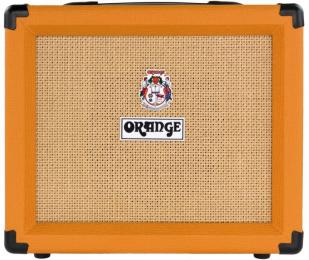
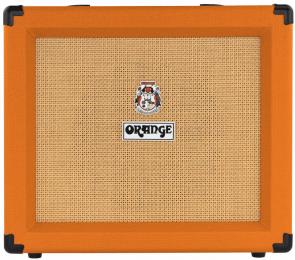
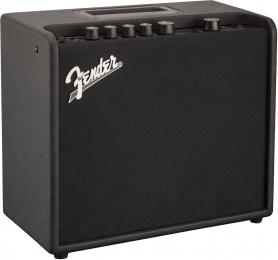
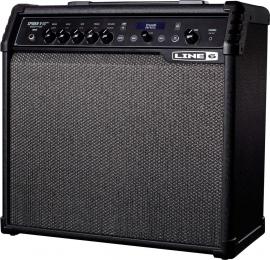
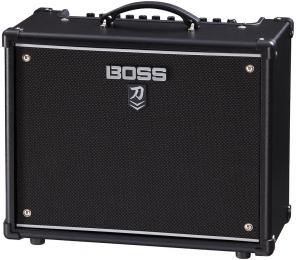
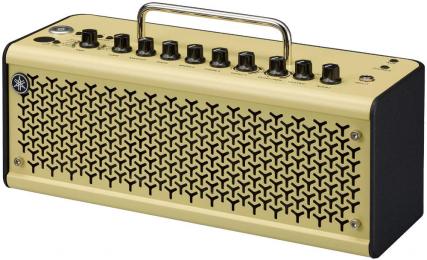
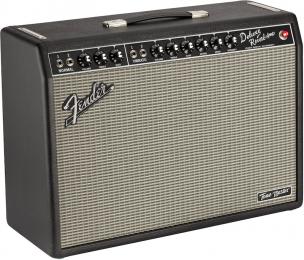
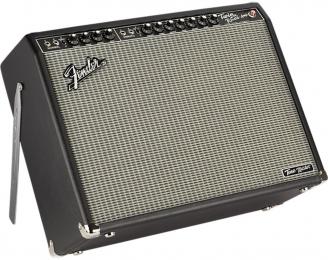
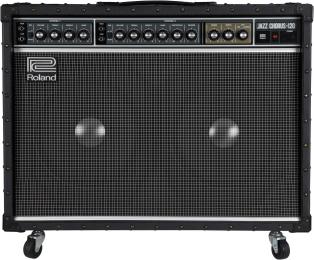
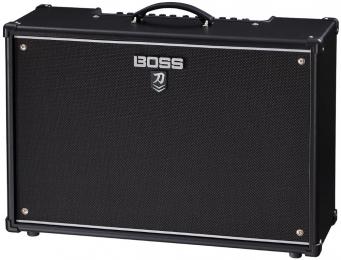
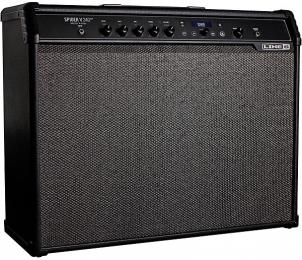
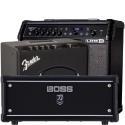
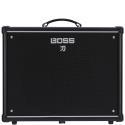
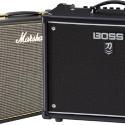
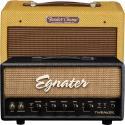 The Best Small / Low Watt Tube Amps - Combo & Amp Heads
The Best Small / Low Watt Tube Amps - Combo & Amp Heads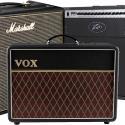
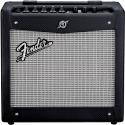
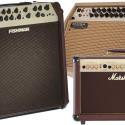
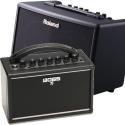
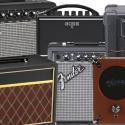
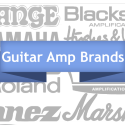 The Best Guitar Amp from the Top 10 Guitar Amp Brands
The Best Guitar Amp from the Top 10 Guitar Amp Brands




Comments
You don't mention ZT Lunchbox
Submitted by Chris (not verified) on
You don't mention ZT Lunchbox amps...high quality, great design, and sound good.
They are good amps and we
Submitted by Jason Horton on
They are good amps and we have recommended older models in the past. I've published our rating for the current model, the ZT Lunchbox Reverb LBR1 so you can see that it doesn't yet have high enough ratings to make it onto our recommended list.
You missed so many amps on
Submitted by Chris (not verified) on
You missed so many amps on this list that it’s crazy? Quilter has a couple that are under your 1500 threshold and sounds amazing , Hughes and Kettner have the Black Spirit 200w which is absolute crushing. There are too many more to mention but this article needs to be revisited…?
Thanks for those suggestions.
Submitted by Jason Horton on
Thanks for those suggestions.
We actually considered the Quilter Mach range and they only just missed out on making the cut, but their ranking has been improving and if we were to redo the selection today there's a chance Quilter would make the cut - see their ratings here.
The Black Spirit on the other hand isn't eligible because it's an amp head and we're only including combo amps in this guide.
Publication of our April 2022
Submitted by Jason Horton on
Publication of our April 2022 Edition resulted in the following amps coming off the recommended list above:
Would love to see the new
Submitted by Joey Frost (not verified) on
Would love to see the new Electro Harmonix Dirt Road Special added to this list. I bought one in 2020 and it's yet to disappoint
It is on our short-list for
Submitted by Jason Horton on
It is on our short-list for recommendation in this guide, but it didn't have high enough ratings to be included in the current edition - you can see our rating for it here.
I had a quick look at the rating sources and it appears reviews have been getting more favorable over time so maybe it will make it onto one of our recommended lists in the future.
We have removed the following
Submitted by Jason Horton on
We have removed the following amp from the recommended list above due to it being discontinued: Orange Crush CR120C.
Publication of our July 2021
Submitted by Jason Horton on
Publication of our July 2021 Edition resulted in the following amps coming off the recommended list above, but you can still see our analysis of them:
Our August 2020 update
Submitted by Jason Horton on
Our August 2020 update resulted in the following amps coming off the recommended list above, but you can still see our analysis of them:
What happened to GALLIEN
Submitted by Louis (not verified) on
What happened to GALLIEN KRUEGER guitar amps? Latest I found they only continue making bass amps. Until the mid 90s I remember some big name guitar players using them mostly in rock bands. I believe they were pretty good high end solid state amps if I'm not wrong.
Thanks
As a result of this month's
Submitted by Jason Horton on
As a result of this month's update of this guide the following amps were removed from the recommended list above, but you can still read our analysis of them:
I played a solid state
Submitted by Ryan h 36 (not verified) on
I played a solid state throughout the 90s & I would have sworn bye it, (was a recording professional at this time)anyway two heads no 3 actually I still believe have Somme of the tightest most focused high gain I've ever had the pleasure to play. (Mind u I play through a Herbert or uberschaller now a days)give AMPEG VH 140c a try or the ss 150, both SS & both will thump your chest like a sledgehammer! & finally PEAVY supreme 160 all 3 imho are legit, if u listened to death metal in 90s I won't say the 2 bands names only album names & u can get an ear full of ampeg from both, pierced from within & system's of the animal.ampeg WERE about $1300 then but, the PEAVY& the amps noooo joke man, . $500! Try em!
No Quilter?
Submitted by Cbusser (not verified) on
No Quilter?
Seriously. The Quilter amps
Submitted by PeteM (not verified) on
Seriously. The Quilter amps are great.
The Quilter amps look nice
Submitted by Daniel Barnett on
The Quilter amps look nice but at the moment they still seem to fall into the 'boutique' category and as such there's not really enough feedback from buyers for us to get a reliable ranking on them. In this list we were focusing on widely available and well known amps.
No Katatna?
Submitted by rtreloar (not verified) on
No Katana?
Back in May when we published
Submitted by Jason Horton on
Back in May when we published this guide the Boss Katana amps were very close to being included but their ratings were just a fraction low - but not by much.
Out of personal curiosity I decided to update their Gearank scores and publish them in the Music Gear Database.
The result was that if we were to update this guide today, then the Katana-100 would have a strong chance of being included, but the Katana-50 would probably just miss out again (I have not published updated Gearank scores for the rest of the contenders).